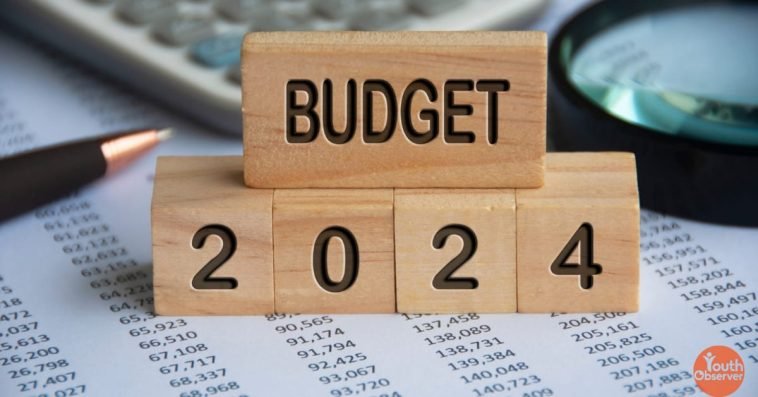Finance Minister Nirmala Sitharaman is ready to walk the economic tightrope on February 1st with the Union Budget 2024-25. Let’s dive into 5 key charts that paint a picture of the budget’s potential path:
1. Balancing Revenue and Expenditure
One of the critical aspects of budget scrutiny involves analyzing the relationship between total revenue and expenditures, particularly concerning the size of the economy. The current forecast places revenue at 9.2% of the GDP, closely aligning with the 30-year average of 9.8%. Notably, spending, which surged to 17.7% during the Covid-19 pandemic, is now gradually declining to 15.2%, signaling a return to normalcy. In response to global fiscal challenges, the government has strategically shifted public spending to focus on supporting the vulnerable, aligning with its fiscal consolidation efforts.
2. Fiscal Trends and Deficit Management
Examining fiscal trends, a pivotal indicator of fiscal health, the fiscal deficit has exhibited varied patterns. Reaching its peak at 9.2% in 2021, it is anticipated to ease to 5.9% by the fiscal year 2024 budget estimate. This transition reflects a strategic approach to borrowing and recovery. Despite nominal GDP figures falling below expectations, the government remains on course to achieve its Rs 17.9 trillion fiscal deficit target for FY24. As of November 2023, the government’s fiscal deficit amounted to Rs 9.06 trillion, representing 50.7% of the annual budget target, as reported by the Controller General of Accounts.
3. Tax Revenue and Government Spending
After the pandemic, India’s tax-to-GDP ratio increased to 11.1% in FY23, surpassing the pre-pandemic level of 10.9% in FY19. However, it’s not expected to go beyond the FY18 peak of 11.3%, with forecasts indicating stability in FY24. Central tax collections have grown significantly, rising by 33.7% in FY22, and a 10.3% increase is projected for 2023. However, this robust growth is slowing down, as seen in reduced tax buoyancy and a decline in non-tax receipts, suggesting a recalibration of fiscal strategy.
4. Government’s Spending Focus
The government’s spending strategy emphasizes capital expenditure, expected to increase by 37% to Rs 10 trillion in FY24. Despite a modest rise in revenue expenditure, this focus on capital spending indicates a preference for long-term asset creation. Data from the Controller General of Accounts (CGA) reveals that until November 2023, the Centre spent Rs 26.52 trillion, which is 58.9% of its 2024 budget estimate. This spending is divided into Rs 20.66 trillion for revenue and Rs 5.85 trillion for capital accounts.
5. Size of the Budget
The Union Budget’s proportion to GDP expanded during the pandemic due to subsidy dues clearance and increased fiscal transparency. However, it’s now contracting, with the 2024 Budget estimated at 14.9% of GDP, signaling a return to pre-pandemic norms. As the country approaches the interim Budget, significant policy changes are unlikely. Before elections, Budgets typically aim to boost consumption by increasing income levels. Expectations are now set for measures to enhance consumer disposable income, likely through increased infrastructure spending and more funds for rural development.

